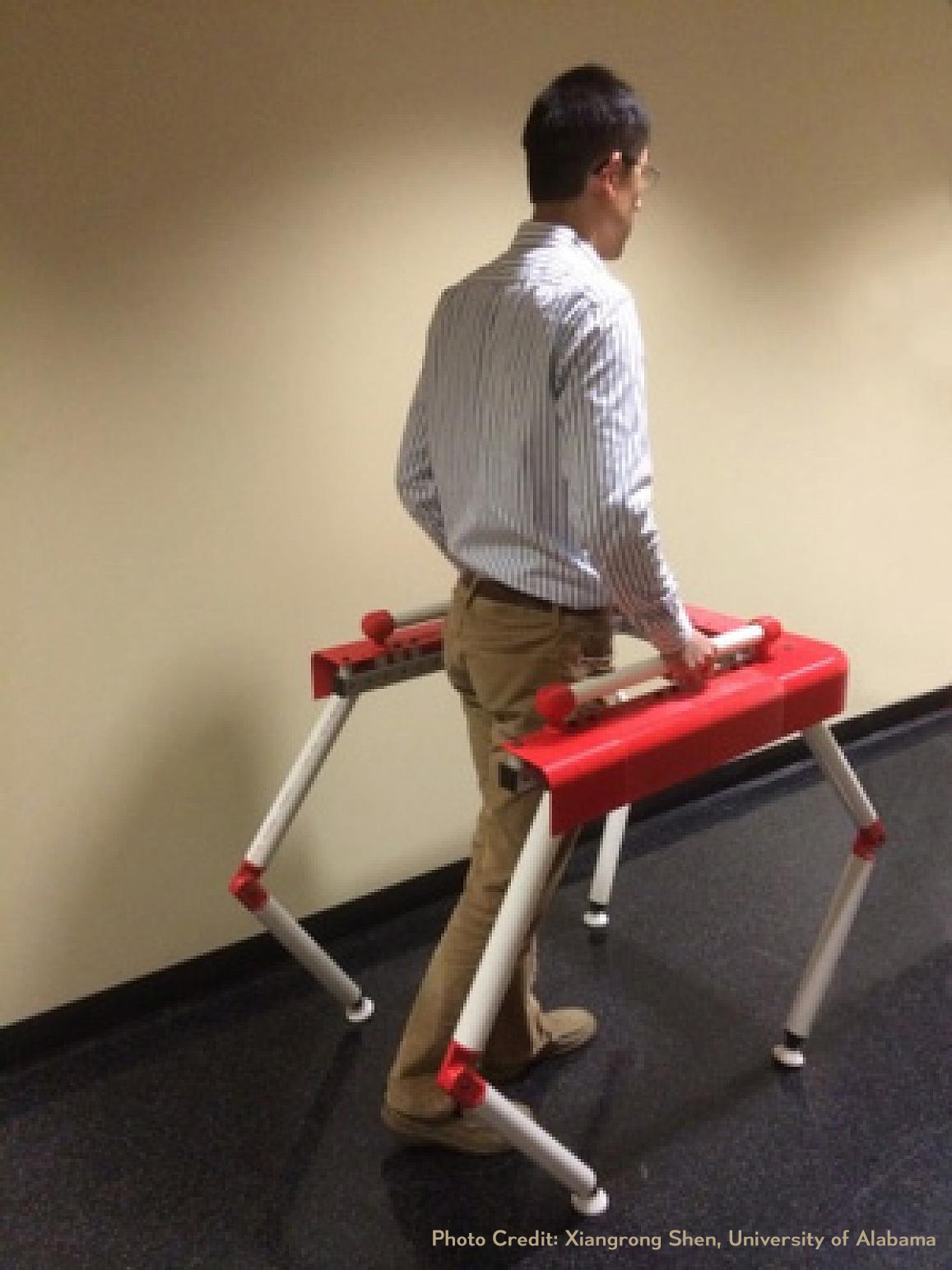Maintaining mobility in old age not only extends the ability to live independently, keeping active helps seniors stay healthier longer. However, the fear of falling often leads to a decrease in mobility among older adults who avoid activities that put them at risk for falls which can often result in injuries.
In response to this dilemma, research has fathered a “smart walker” prototype, designed to increase mobility for the elderly. Funded by the National Institutes of Health’s National Robotic Initiative, the four-legged walker is designed to function in two modes. One allows the operator to select the amount of power assistance needed for walking and a second mode enables the robot to accompany the walker, carrying groceries, laundry or other loads. The robot uses a 3D computer-based sensing system to detect motion and can overcome obstacles that would not be possible in a wheelchair.
The technology is aimed at helping seniors remain at home longer without the need for costly home renovations to accommodate wheelchairs. Remaining mobile can also improve overall physical and mental health by allowing elderly seniors to live more independently.
While the technology is still in the testing phase, $2.2 million has been allocated over five years as part of the robotics initiative, a federal program promoting the development of robots that help humans.
For more information on the research projects visit the Journal of the American Medical Association website at: http://jama.jamanetwork.com/article.aspx?articleID=2484321.






Add Your Voice
0 Comments
Join the Discussion